Is Higher Education even interested in reform?
A new featured article by the AAUP calls viewpoint diversity anathema to academic freedom. Where to even begin?
We at FIRE have been battling overreach by the Trump administration every day for months now.
When federal agencies threatened to strip Harvard of billions in research funding unless it submitted to ideological audits, we were among the first to call it what it was: unconstitutional coercion. We defended the principle, not the politics.
When the administration floated barring Harvard from enrolling international students, or even revoking its nonprofit status for alleged political bias, we spoke out again.
When Texas banned protests after 10 p.m., we sued to protect expressive freedom.
When Homeland Security asked universities to hand over student protest footage, we condemned it as government surveillance by another name.
When the State Department threatened to revoke students’ visas and deport them for protected speech, we sued to defend the right to campus expression.
And when the White House announced its “Compact for Academic Excellence in Higher Education,” we called it out as an attempt to impose government-funded orthodoxy.
In other words, we’ve spent the better part of this year defending higher education from a White House intent on micromanaging its politics.
But we’ve also been pretty clear, from 25 years of advocacy, that higher education badly needs improvement. And we’ve seen some positive signs. A number of university presidents seem to understand that the moment demands reform: on free speech, institutional neutrality, intellectual pluralism, and transparency.
Indeed, we’ve been told more times than we can count that a “vibe shift” happened last fall, and that reform is essentially already a done deal. But we think those with the biggest vested interest in campus — professors and administrators — often don’t seem to have gotten the memo. At the faculty level, particularly in the humanities, the reflex too often remains obstructive.
No institution better embodies that reflex than the American Association of University Professors (AAUP). Under its current leadership — President Todd Wolfson, who frames criticism of academia as part of “right-wing forces… striving to dismantle our institutions” — the AAUP has responded to legitimate calls for reform with a mix of denial and deflection. “Professors are not the enemy,” Wolfson recently declared. “Fascists are.”
While FIRE defends higher education from federal intrusion, the AAUP defends higher education from reform. It is a guild that sees itself as untouchable: the critic-proof steward of a trillion-dollar industry, allergic to feedback from a public it doesn’t seem to know it serves. It stands atop its Perfect Rhetorical Fortress, ready to (mis)label anyone who disagrees with it.
The genuinely politically diverse heterodox Academy? “Conservative.”
Critical of DEI, which has in fact been used to threaten academic freedom? “Right-wing.”
FIRE? “[C]omplicit with the attacks on higher education being led by the right” — and when someone demanded evidence, the AAUP hilariously pointed to the STOP WOKE Act, which FIRE successfully sued to block. (And then, of course, they deleted the tweet.)
We can think of few things that are more anti-intellectual than this name-calling habit, which Greg has dubbed Fashcasting. The idea is that simply claiming your opponent is right-wing is tantamount to refuting their argument. It’s little more than a schoolyard tactic, but somehow it works in environments that should not take it seriously — another sign of a viewpoint diversity problem, which the AAUP also vociferously rails against.
This brings us to the latest entry in AAUP’s recent history of dodging reform: the lead essay in its flagship magazine, Academe. It’s titled “Seven Theses Against Viewpoint Diversity,” written by Lisa Siraganian, and it’s an unintentional masterclass in how to lose the moral high ground.
Let’s go through these theses one by one.
Thesis 1: “Viewpoint diversity functions in direct opposition to the pursuit of truth, the principal aim of academia.”
The piece starts out with this genuine banger. Siraganian treats “viewpoint diversity” as a threat to truth-seeking itself, tossing out caricatures about “flat-earthers” and “QAnon believers” (because of course it does) to avoid addressing the real question: How can you find truth in a system that systematically excludes dissenting voices?
The answer, of course, is obvious: you can’t. Every period of intellectual stagnation in human history, from the medieval university to Lysenkoist biology in the Soviet Union, has begun with the same conviction: We already know what is true, and those who doubt it are either fools or heretics.
Today’s academy, dominated by an overwhelming ideological consensus on many of the most contested political and moral questions of our time, risks the same fate. You don’t need to hire conspiracy theorists to recognize that the absence of serious dissent makes error invisible. If a department of theologians once all believed the sun revolved around the Earth, the best cure was not more theologians — it was a heretic with data.
Viewpoint diversity creates an environment where serious, evidence-based challenges to orthodoxy are possible and safe. The Supreme Court put it simply in Keyishian v. Board of Regents (1967): “The classroom is peculiarly the ‘marketplace of ideas.’” If the classroom ceases to be such a marketplace, academic freedom ceases to be necessary, because its primary value to society is to ensure the freedom to challenge orthodoxy in the institutions where orthodoxy has traditionally been challenged.
For decades the educational case for affirmative action was that diversity — of background and experience — improves the exchange of ideas. Last year, the AAUP put out a statement reading, “Progress toward diversity goals has resulted in better knowledge production that has started to fill in some of the gaps, expose and correct blind spots, and open entirely new vistas of inquiry that were not possible without it.”
If viewpoint diversity by racial proxy is good because it enriches the conversation, then direct diversity of viewpoints should be celebrated, not considered “direct opposition to the pursuit of truth.”
Siraganian invites a digression here by holding up the discovery of DNA’s structure as the example of a truth that, having been discovered, would no longer require a diversity of opinion in the academy. In their own response to Siraganian, Senior Contributing Editor of Public Discourse Matthew Franck and Professor of Politics and International Affairs at Princeton University John Londregan efficiently point out the flaw in this thinking:
None of this is an argument against promoting multiple perspectives on the truth. Fortunately, there were diverse viewpoints on the matter of DNA until Watson and Crick’s decisive discovery, and while the evidence continues to support the double-helix structure of the DNA molecule, it turns out that not all DNA is diploid: some species have as many as six mutually redundant sets of chromosomes. Have there been comparably decisive discoveries in Siraganian’s discipline of comparative literature? If so, what are they?
This is the nature of all “truth.” Greg made this point before in his review of Jon Rauch’s The Constitution of Knowledge:
Despite appearances, despite our intuition, despite our confidence, the world around us is deceptively difficult to understand. We are self-deceiving creatures, and what is called the “Enlightenment” was more the discovery of the profundity of our own ignorance and the means to manage it, as opposed to a sudden epiphany about the nature of everything.
In the search for truth, every answer is a question we don’t fully understand yet. Someone who says truth shouldn’t be subjected to dissent isn’t describing the search for truth, they’re describing what John Stuart Mill would call “a dead dogma” — and a poor one at that.
Thesis 2: “Viewpoint diversity can only work as an instrumental value.”
In a nutshell, Siraganian is arguing that viewpoint diversity isn’t the real goal. Rather, truth is the real goal, and so it’s okay to remove viewpoint diversity in the pursuit of truth since it is merely “instrumental.”
This is a bit like arguing that steering is only “instrumental” to driving a car, because we want to go forward, not in circles like a steering wheel does. But as it happens, some instruments are essential to the overall goal.
Viewpoint diversity prevents groupthink, sharpens reasoning, and checks ideological blind spots. In social psychology, for example, political diversity is empirically shown to reduce bias and improve methodological rigor. Sam’s national surveys of thousands of administrators show just how extreme the imbalance has become:
Two-thirds of administrators self-identify as liberal, with 40 percent of that liberal pool stating that they are far left. A quarter of them call themselves middle of the road, while only 5 percent say they are on the right. That makes for a liberal-to-conservative ratio of 12 to one. Faculty members, in contrast, have a ratio of about six to one, with 13 percent of our nation’s professors identifying as conservative.
If “instrumental” means “necessary to make the search for truth even possible,” then yes, viewpoint diversity is instrumental. Peer review, adversarial debate, and replication are all “instruments,” too. Funny how no one calls those a threat to truth. Through that lens, aren’t DEI goals also “instrumental” to the pursuit of truth? If so, there seems to be no institutional will at the AAUP to subject them to the same analysis as “viewpoint diversity.”
Call viewpoint diversity instrumental if you want, but it’s one of the most important instruments we have.
Thesis 3: “Viewpoint diversity assumes a partisan goal based on unproven premises.”
This is where the essay’s denialism crosses into comedy. Siraganian insists there’s “no proven problem” of ideological imbalance in academia — as if fifteen years of research documenting it, often by scholars inside the system, never happened.
In fact, the evidence is overwhelming. In 2012, Inbar and Lammers found that many social and personality psychologists admitted they would discriminate against conservatives in hiring or publication decisions. As Sam wrote in his initial response to Siraganian’s article:
Faculty surveys consistently reveal dramatic ideological imbalance. In many humanities and social science fields, the ratio of liberals to conservatives exceeds 10 to 1. In disciplines such as sociology, gender studies, and English, the imbalance is so extreme that it approaches a ratio of 100 to 0. A 2022 national survey found that nearly 80 percent of professors identify as liberal, while just six percent identify as conservative. These results have been replicated across multiple studies and over many years.
Meanwhile, job postings themselves tell the story. Many academic searches require statements on the candidate’s “efforts to enhance diversity,” “equity in the classroom,” “approach to [DEI] in teaching,” or other analogous phrases. UC Berkeley’s life sciences division even screened nearly 900 applications solely on DEI statements, discarding two out of three applicants before reading a word of their research. MIT has since scrapped mandatory DEI statements entirely, acknowledging that they “impinge on freedom of expression” and don’t work.
The system has become insular, intolerant, and allergic to dissent, and the AAUP has been perpetually unwilling to acknowledge the mountain of evidence to that effect. For an organization wringing its hands about the negative effect viewpoint diversity might have on the search for truth, it has shown a total absence of curiosity for the kind of research where truth might be found.
Welcome to the Conformity Gauntlet!
I am excited to announce that an adapted chapter (with a ton of new data) from Rikki Schlott and my book ‘The Canceling of the American Mind’ will be the cover story at Reason magazine next month. It describes what we call the Conformity Gauntlet — the incredibly difficult road you have in academia if you step out of lin…
Thesis 4: “Viewpoint diversity undermines disciplinary and specialized knowledge and standards as well as the autonomy of academic reasoning and scholarship.”
This thesis is summarized in the second sentence as, “Viewpoint diversity is anathema to academic freedom.” Siraganian explains: “Rejecting intellectually unsuitable ideas is what specialized knowledge and the autonomy of academic reasoning, and thus academic freedom, are all about.”
As a matter of internal logic, that fails on its face because in order to reject an intellectually unsuitable idea, you have to first consider that idea — and if you won’t consider the idea, then you aren’t rejecting it, you’re just choosing faith over reason. The need to consider ideas is what academic freedom is all about.
Siraganian seems to think that the law has created a concept of academic freedom because the public is meant to be in awe of the extraordinary wisdom of the ivory tower. In reality, the opposite is true. The law created the concept of academic freedom because we expect the ivory tower to test ideas — and because we know many of those ideas will be wrong, we need to give professors the ability to be wrong. That is what “uniquely the marketplace of ideas” means: the place where we collect ideas and test them against each other.
If higher education ceases to function as this “marketplace,” there will be no First Amendment justification for academic freedom, and academic freedom will cease to exist. In that, the AAUP and the Trump administration seem to be in total agreement; they just disagree about which political orthodoxy should be permanently imposed upon academia.
And that’s what it is, by the way: political orthodoxy. Many of the same disciplines that the AAUP champions as “new vistas of inquiry” began as explicitly political projects forwarded in the name of viewpoint diversity. Women’s studies, gender studies, and related programs were launched to challenge dominant frameworks and give marginalized voices institutional power. That mission — add the missing perspectives, challenge the orthodoxies — was once the progressive case for academic reform.
The AAUP’s stance on DEI statements makes its hypocrisy on viewpoint diversity even worse. It has come to defend DEI statements — literal ideological litmus tests — as compatible with academic freedom. The same organization that sometimes rails against loyalty oaths now endorses their mirror image, provided the creed is fashionable. When Republicans want loyalty oaths, it’s “fascism.” When the test runs the other direction, it’s “progress.”
This extraordinary hubris merits no deference.
Thesis 5: “Viewpoint diversity is incoherent.”
Siraganian argues, “you cannot simultaneously defend rigorous arguments in support of the university’s striving for truth and support rigorous arguments for ideological (or intellectual or viewpoint) diversity.”
The search for truth is the search for ever more complicated and refined questions. We pursue that search by considering competing possible answers. To do that, we need a diversity of speakers to postulate such answers, and more carefully refine the next question. Therefore, the search for truth requires a diversity of views. As Ohio State University professor Michel W. Clune explained in his own response to Siraganian, citing viewpoint diversity defender (and Greg’s The Coddling of the American Mind co-author)
:The goal, for Haidt, is neither the proportionate representation of conservatives in academe nor the representation of every possible view on an issue, but “institutionalized disconfirmation.” There should be a sufficient diversity of views in academic units to enable teachers and researchers to identify and challenge claims that, in homogenous conditions, are often tacitly accepted.
Durable, trustworthy, tested truth is a side-effect of viewpoint diversity, not its opposite. Conservative economics departments benefit from having Marxists to argue with (and despite the colossal disaster of the 20th century, those are not in short supply in academia; in a 2021/2022 survey of about 7,000 faculty members, 7.7% identified as Marxists). The same goes the other way. Scholarship thrives when assumptions collide. That’s what peer review was meant to accomplish, and to the extent it has collapsed, it has collapsed in an environment of groupthink.
Thesis 6: “Viewpoint diversity has already been used, both in the United States and abroad, to attack higher education and stifle academic freedom.”
Here, Siraganian waves Hungary, Russia, and Turkey’s crackdowns on academics like a bloody shirt, implying that any talk of reform is a slippery slope to authoritarianism.
This is unserious reasoning. Reform and repression are not the same act; in fact, the failure to reform is too often what provides the excuse for repression. The more universities pretend there’s no problem, the easier it becomes for politicians to step in and claim the moral high ground.
That some actors have used the phrase “viewpoint diversity” to attack viewpoints should be no surprise to an author that uses the phrase “academic freedom” to try to restrict academic freedom. It also proves nothing.
Thesis 7: “The argument for viewpoint diversity is made in bad faith.”
This one is particularly rich, given the organization has frequently engaged in bad faith arguments — such as their recent approval of academic boycotts. Of course, the major boycott movement underway is BDS, a movement against Israel. But that’s not really why they did it, you understand. It’s only a coincidence that Todd Wolfson decided the very next thing he’ll do is support BDS at Rutgers.
It was transparent, and it thought people looking on were fools. Yes, the AAUP’s decision to abandon its position on boycotts while pretending there wasn’t one specific thing it wanted to boycott was made in bad faith. Indeed, it’s hard to take the argument that viewpoint diversity is anathema to academic freedom as anything other than bad faith, given that the AAUP, like many institutions, seizes the value of viewpoint diversity when it’s attached to identity, color, or sexuality, but not when it’s attached to actual diversity of opinion.
There are people who make arguments in favor of academic freedom in bad faith, sure. But that doesn’t make the argument itself false. And there are many more people who make this argument in good faith, like FIRE.
So what is the takeaway from this thesis? We don’t have to consider whether criticism is valid if we attribute the criticism to improper motivation? The AAUP accuses critics of bad faith while denying documented bias, pretending DEI statements aren’t ideological filters, and writing statements that quietly pave the way for BDS resolutions while claiming otherwise. For the AAUP, it feels like every challenge is partisan, every critique is illegitimate, every reformer is an enemy, and anyone who doesn’t agree with them is either “fascist” or “right-wing.” Mighty convenient!
This absence of intellectual humility is what underpins the entire premise of this article. Anyone sharing this vision of higher education as the arbiter of truth needs to take a deep breath, wait a beat, and ask themselves the question that is the real beginning of knowledge: What if we’re wrong?
The Step-Zero Test
Since these theses were a challenge, we have a challenge in return. If you’re serious about reform, prove it in two moves:
First, say it out loud: “We have a homogeneity problem that makes error invisible and dissent costly.”
Second, do the basics: End compelled statements and ideological screens. Adopt institutional neutrality and robust free-expression commitments. Protect due process. Build recurring, in-house debates across real schools of thought.
If you can’t do those two, you’re not serious. You’re just ideological bullies looking for protection against a much bigger, scarier ideological bully.
Where this ends
We’ve said it before, and we’ll say it again: FIRE will fight government overreach from any administration. But the AAUP’s current posture — insisting that higher ed has nothing to fix while the public’s trust in academia plummets — is a gift to every demagogue who wants to control it.
This is how Trump wins — not because his administration understands or cares about free speech and academic freedom, but because the people who should have been steadfastly defending those principles decided they were optional.
Reform is coming either way. The only question is whether universities will do it themselves, or have it done to them.
SHOT FOR THE ROAD
As longtime followers of my work will know, I’m always looking for creative new avenues and mediums to bring FIRE’s message to new audiences. That’s because the population of folks for whom free speech is a primary interest, unfortunately, is rather small, and a lot of those people already work at FIRE. Everyone is passionate about something, though, and one thing that has succeeded remarkably well is showing people how free speech is connected — or in many cases absolutely vital — to their particular hobbies or interests. Can We Take a Joke? showed how crucial free speech is to standup comedy, and The Coddling of the American Mind made the case that misguided parenting, educational, and therapeutic practices contributed to the free speech crisis we’re currently living through today.
So when the renowned and pioneering online educator Dr.
— creator of one of the most popular online courses of all time, “Learning How to Learn” — reached out to ask if I was interested in collaborating on a course exploring the connections between her field (neuroscience) and my field (free speech), I was ecstatic. Not least because this was a topic I’d been thinking about for so long. I’m so pleased with how it turned out, and even more excited for its potential to bring FIRE’s message to new audiences. It remains completely free, and if you haven’t already, I hope you’ll check out “Speak Freely, Think Critically: The Free Speech Balancing Act.”




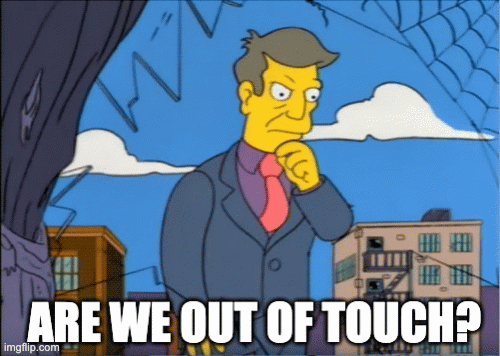
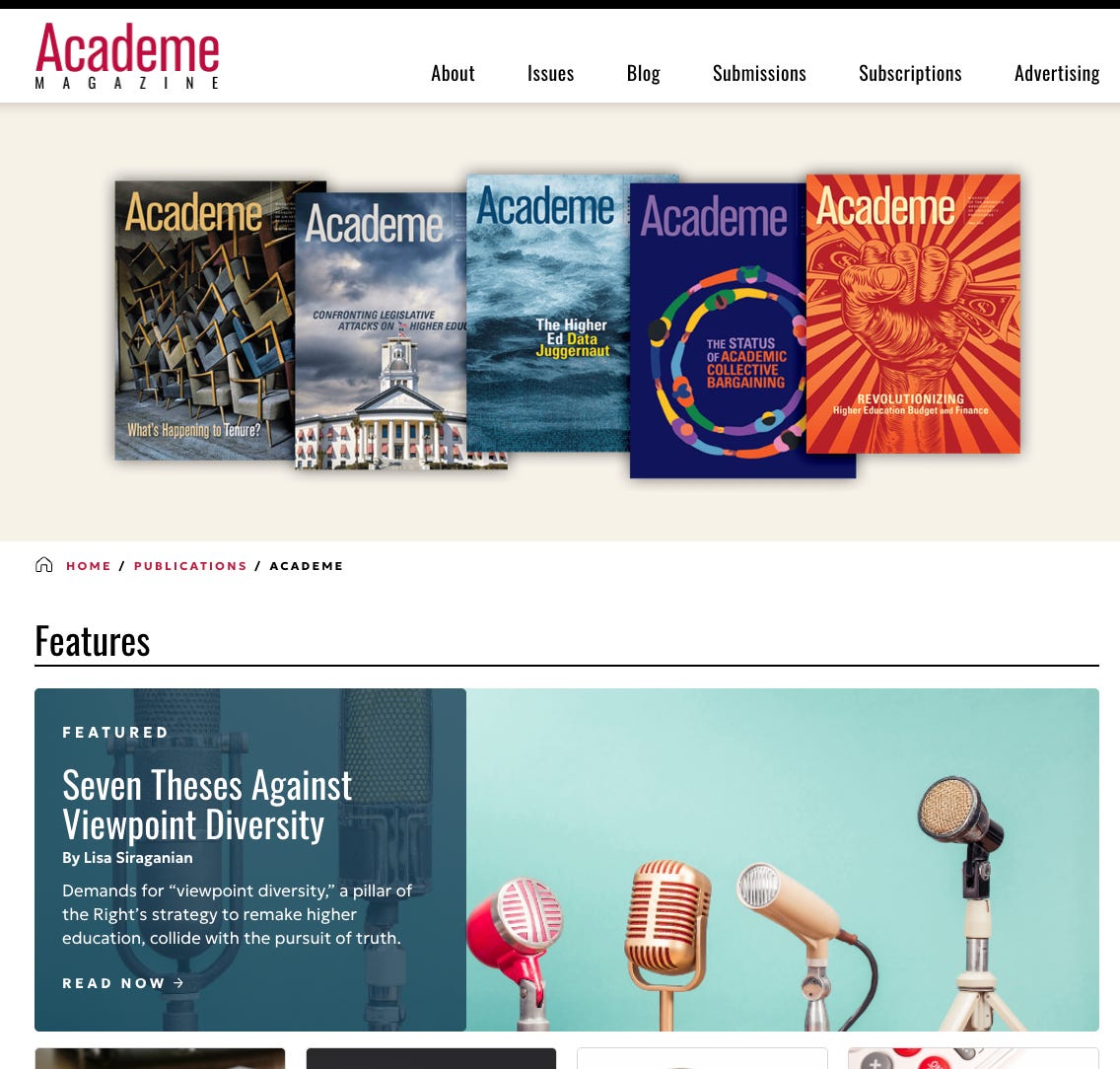
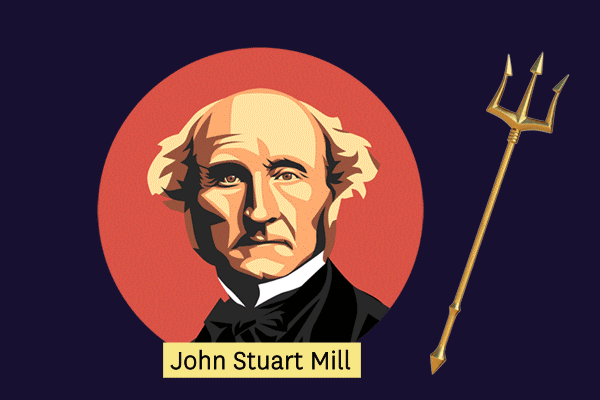
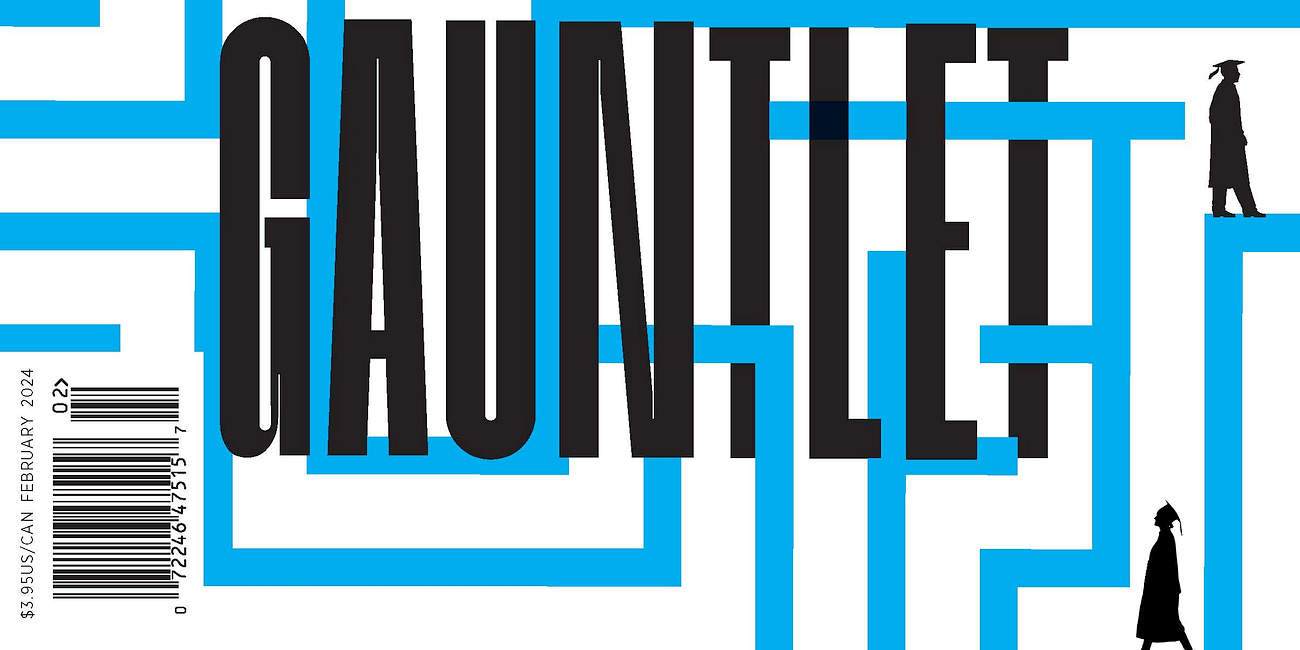
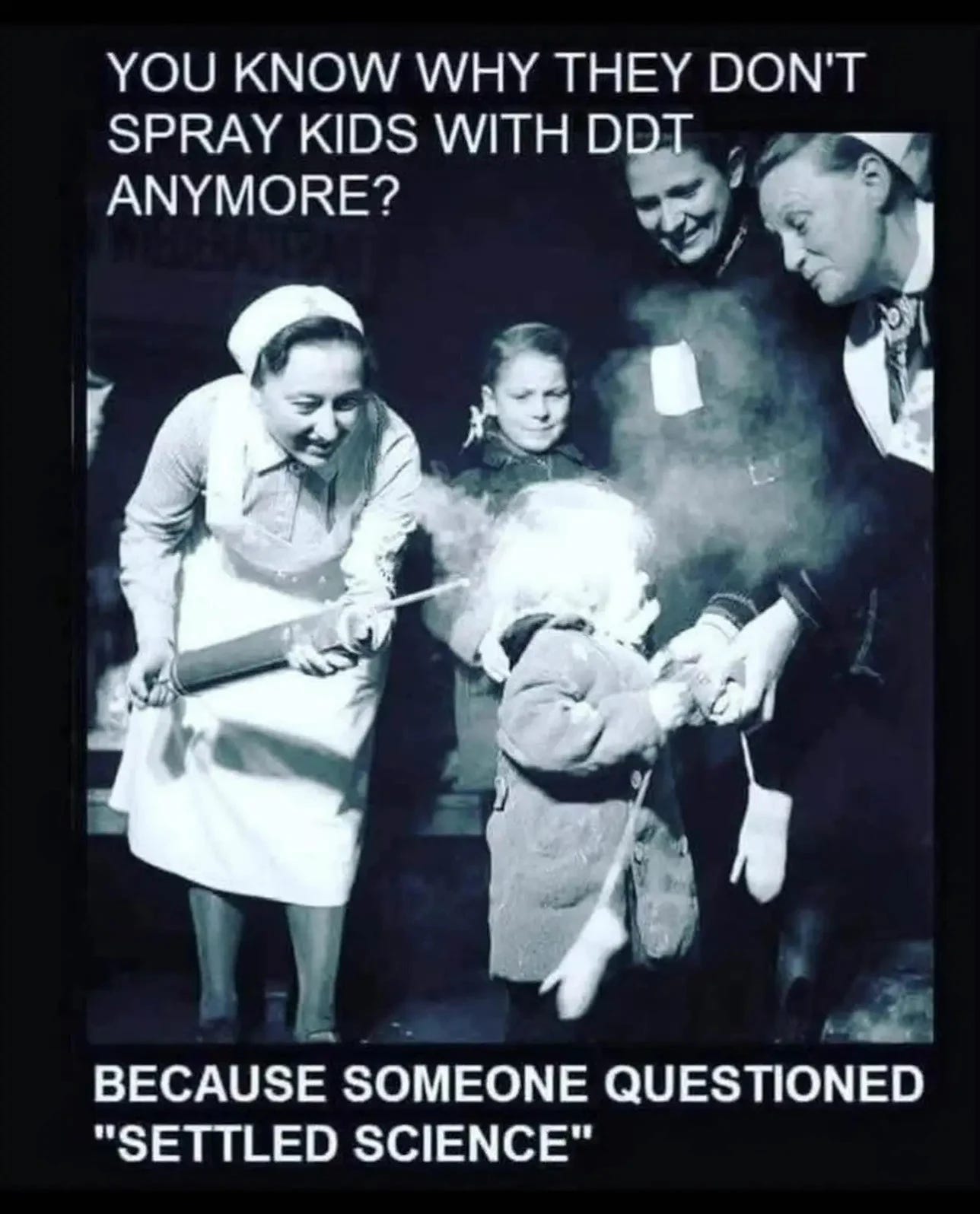
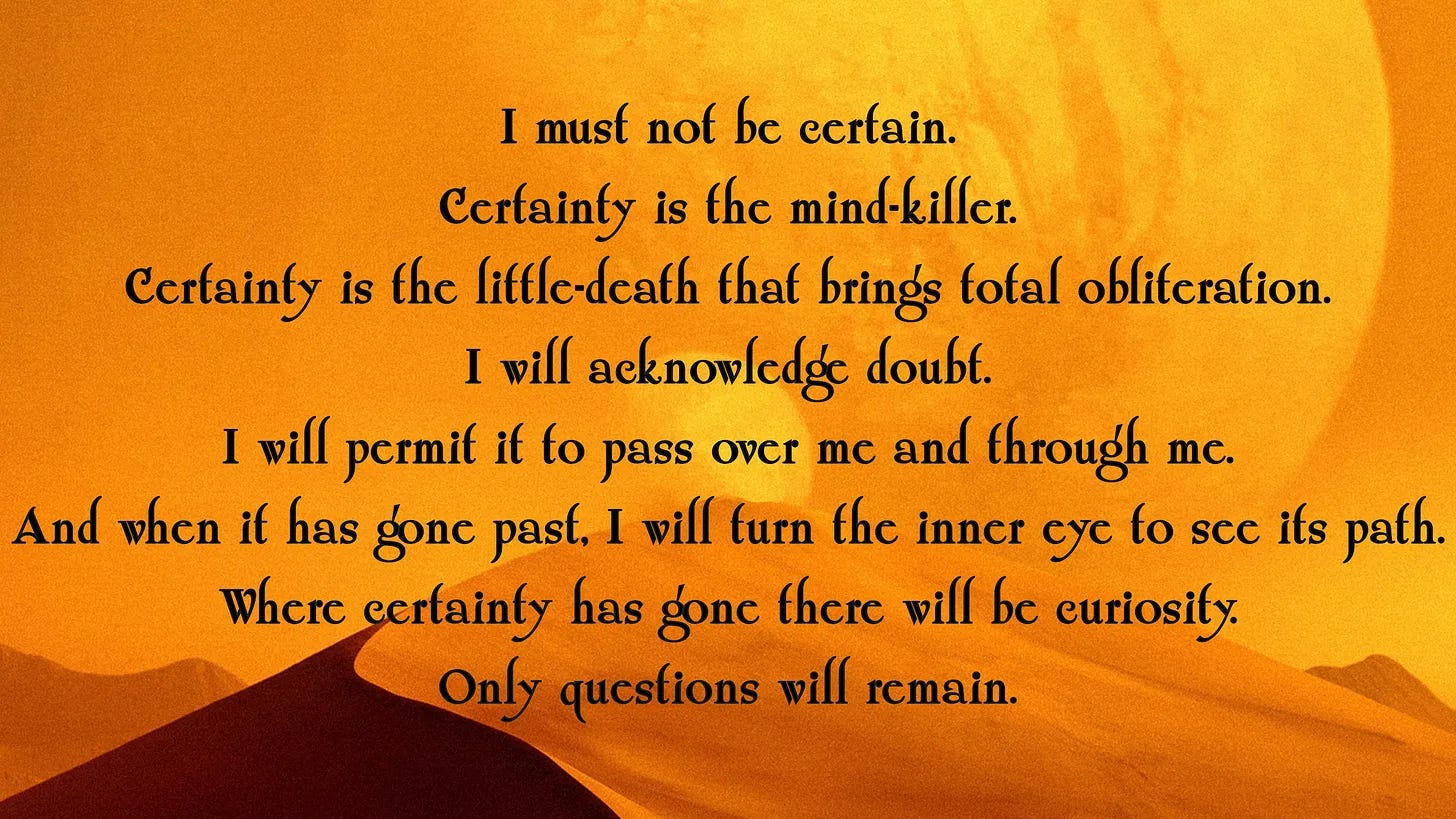
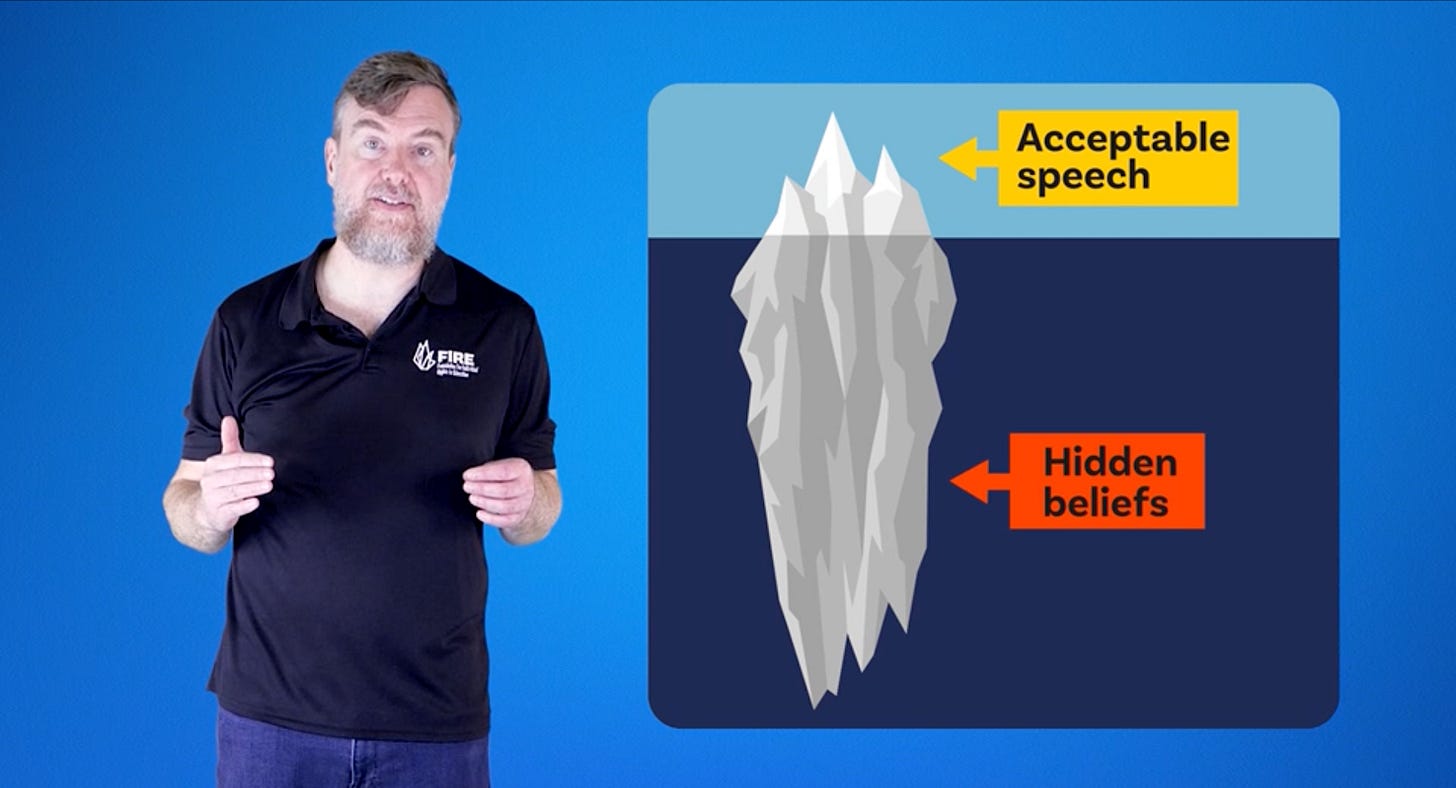

A very brief summary of Siraganian's points:
We who control universities are the only people smart enough to know truth, so everyone else stay away.
But we are useful, so continue to pay us.
Perhaps an “ecosystem of ideas” might be more persuasive than a “marketplace of ideas”.
A certain faction hates markets. They also probably hate ecosystems, but they will deny it.